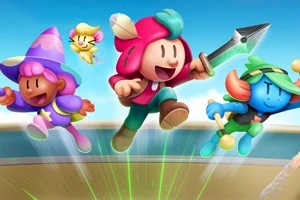My Mario Memories - The N64 and Gamecube
Posted 17 Sep 2015 at 20:21 by Paul Muchmore

My Mario Memories – The N64 and Gamecube – when Mario became even more than a platforming plumber.
The recent release of Super Mario Maker takes Mario right back to his roots – well, not quite as far as his debut as Jumpman in Donkey Kong in 1981, but it is built upon the nostalgia had by many for his 2D sidescrollers that shot him to superstardom in the 80s and 90s, and have continued to bring joy to millions in the 30 years since.
But it was not these classic platformers than made me a Mario fan. The late nineties/early 2000s was the era that I really fell in love with Nintendo. I was a relatively latecomer to gaming, getting my first console, a Game Boy Color, in 1998. My first Nintendo game wasn’t actually a Mario game, but Wario Land 2. Quite sacrilegious, I know. My initial introductions to Nintendo gaming led me to getting a N64 the following Christmas in 1999, and soon after experienced my first mainline Mario game, one that first rocked the world in 1996…
Mario leaps into the third dimension!
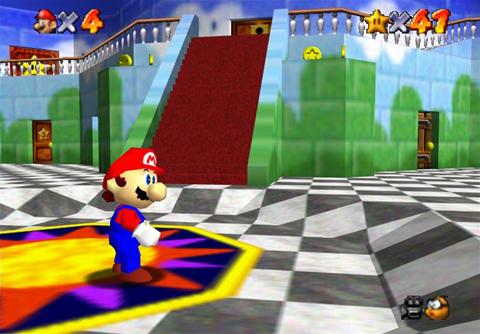 Super Mario 64 was pretty revolutionary. Although it can’t claim to be the first 3D platformer, it most definitely defined the genre, thanks to the increased power of the Nintendo 64 and the wonderful levels created by Shigeru Miyamoto and his team. The analogue stick gave players a level of precision in control that had never been done before. Gone were the Magic Mushroom, Fire Flower and Tanooki suit, this time Mario had a skill set that was defined by his movement. Jumps, dives, punches, kicks and butt slams included – Mario could move in a way that perhaps hasn’t even been matched since.
Super Mario 64 was pretty revolutionary. Although it can’t claim to be the first 3D platformer, it most definitely defined the genre, thanks to the increased power of the Nintendo 64 and the wonderful levels created by Shigeru Miyamoto and his team. The analogue stick gave players a level of precision in control that had never been done before. Gone were the Magic Mushroom, Fire Flower and Tanooki suit, this time Mario had a skill set that was defined by his movement. Jumps, dives, punches, kicks and butt slams included – Mario could move in a way that perhaps hasn’t even been matched since.
Unlike other 3D platformers of the time like Crash Bandicoot, Mario 64 introduced the concept of exploration. What you could call the level select screen was the whole of Princess Peach’s castle! No longer were you defined by a set route to the finish, it was down to you to find it, perhaps with a hint from a non-playable character or the title of the mission. You weren’t even limited to the mission you had selected - the degree of freedom afforded to the player was extraordinary.
Mario 64 inspired a generation of great 3D platformers, but for me, none quite match the platforming precision of Mario’s first adventure in the third dimension, instead focussing on collecting items hidden around 3D worlds. As a child, I never completed Mario 64, but i've since gone back to it multiple times and enjoyed it as much as I did the first time. It certainly hasn’t gone out of date.
It’s also worth mentioning Super Mario 64 marks the first appearance of Charles Martinet as the voice of Mario. His characterisation of the plumber has become famous worldwide – I certainly couldn’t imagine Mario without his voice.
Unfortunately, launch title Super Mario 64 was the only mainline Mario platformer to hit the N64, but he used the rest of the era to diversify his portfolio…
Mario revs up the engine!
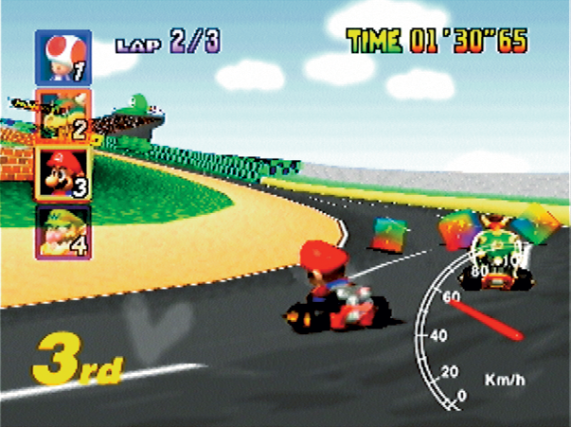 The second game featuring our friend in red dungarees to hit the N64 was Mario Kart 64. Although you could argue the original Super Mario Kart takes place in a 3D space, everything is decidedly flat, and is by far my least favourite in the series. MK64 brought in tracks fully created with 3D polygons, with elevation changes, short cuts, 4-player support, and perhaps its most infamous introduction, that dastardly blue shell. The tracks were more varied and longer than their SNES counterparts, with races on Rainbow Road taking up to 9 whole minutes!
The second game featuring our friend in red dungarees to hit the N64 was Mario Kart 64. Although you could argue the original Super Mario Kart takes place in a 3D space, everything is decidedly flat, and is by far my least favourite in the series. MK64 brought in tracks fully created with 3D polygons, with elevation changes, short cuts, 4-player support, and perhaps its most infamous introduction, that dastardly blue shell. The tracks were more varied and longer than their SNES counterparts, with races on Rainbow Road taking up to 9 whole minutes!
Mario Kart 64 also introduced battle mode, where players fight in special arenas to pop three balloons on the back of their opponents’ karts. This remains my favourite version of the mode – it’s a lot of fun even when you’re defeated and come back as a bomb on wheels trying to spitefully blow up whoever caused your demise!
The series went even further with Mario Kart: Double Dash!! on the Gamecube. Instead of just adding more tracks and improving the graphics, the gameplay was mixed up completely by making the karts hold two characters. This allowed you to pick up two items at once, requiring a press of a button to switch from one character to another amongst all the mayhem on track. Characters also have unique special items – for example DK’s big banana.
It certainly isn’t my favourite entry in the series, but it was the beginning of the mass multiplayer focus - 16 player games were possible via LAN. It also introduced some fan favourite tracks that have returned in following instalments – I’m talking about the manic Baby Park and the brilliant Yoshi Circuit.
Mario takes up sports!
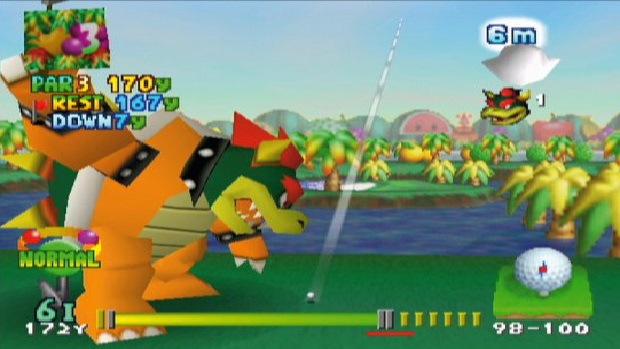 Although Mario had previously appeared in various sports games on the NES and SNES, the Nintendo 64 was when Mario fully starred in sports titles of his own. Mario Golf and Mario Tennis, developed by Camelot were particularly interesting for their use of RPG elements and the Transfer Pak, allowing players to use their characters from the Game Boy Color versions of these games in the N64 counterpart.
Although Mario had previously appeared in various sports games on the NES and SNES, the Nintendo 64 was when Mario fully starred in sports titles of his own. Mario Golf and Mario Tennis, developed by Camelot were particularly interesting for their use of RPG elements and the Transfer Pak, allowing players to use their characters from the Game Boy Color versions of these games in the N64 counterpart.
The two series continued onto the Gamecube and Game Boy Advance, with Mario Golf: Toadstool Tour and Mario Power Tennis introducing more wacky elements and power shots on top of the traditional gameplay. He also took up more activities in Mario Superstar Baseball and Super Mario Strikers - a brilliant take on 5 a side football with a Mario twist. He even escaped from the Mushroom Kingdom to make cameos in SSX On Tour and NBA Street V3. Where does he find all this time?
Mario smashes his way into battle!
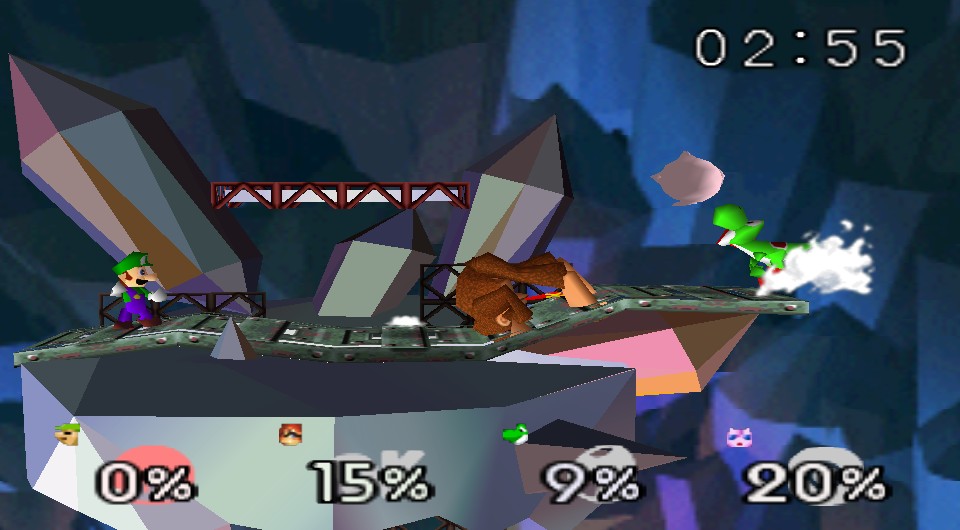
Although technically not a Mario game, it’d be rude not to mention Super Smash Bros. and its sequel, Super Smash Bros. Melee, as examples of Mario branching out beyond his platforming roots.
If you don’t know what Smash is, where have you been for the last 15 years? Since the series debut on the N64 in 1999, Super Smash Bros. has become one of the most loved party games and competitive fighters in the gaming world, and it is unlikely it would have ever have gained as much popularity without Mario and the all-star cast of Nintendo stars adorning the covers.
As a Nintendo novice when it was released, who was admittedly drawn in by Pikachu being in it, it provided a great introduction into the world of Nintendo and its folklore taught by the in-game trophy collection and was certainly a massive twist on the traditional 2D fighter with its items, lack of the usual HP gauge and variety of stages and the hazards each of them brought.
Mario knows how to party!
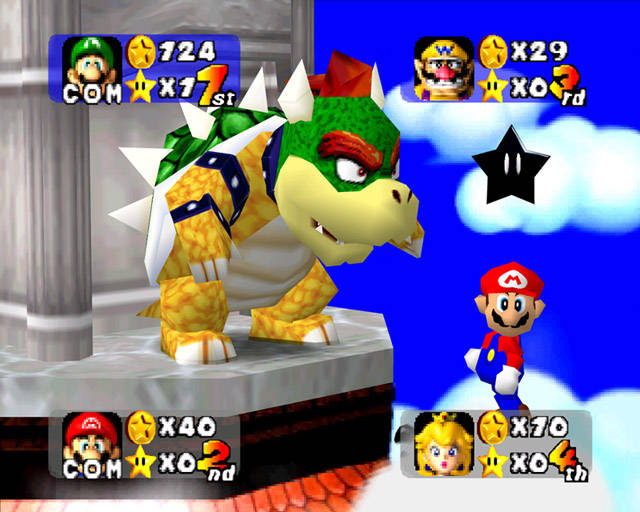
The N64 also saw the debut of the Mario Party series. Although the series has evolved with each new iteration, at its base Mario Party is a board game, with a bunch of mini-games for players to compete at after each round. The player with the most stars after a set amount of turns wins. Like all good board games, players need skill, the correct tactics and just a bit of luck to be victorious and win the game!
During the N64 and Gamecube era, Mario Party had almost yearly offerings, with the series having slowed down since. 2000’s Mario Party 2 is my favourite of the series, but to be honest any of them will be fun if you get a few mates around to have a Mario Party – this certainly isn’t a single player affair!
Mario gets flattened!
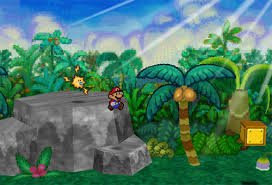
Mario games have always been pretty light on story. Princess gets captured; Mario must save her from Bowser/other enemy. You get the intro, and then are left to the gameplay until the final cinematic. Although Mario starred in Square’s Super Mario RPG, this never made it to Europe, so the Paper Mario series was most people’s first introduction to Mario with just a bit of added plot.
There are many reasons why I love this series. Firstly, it looks amazing. The paper art and animation, and how this is incorporated into gameplay – turning into a paper aeroplane, sliding through small gaps in the wall… it’s just genius.
The gameplay mixes turn based RPG style battles with traditional Mario gameplay – jumping on enemies at the right time will do more damage to them and it’s an awful lot of fun. You may not be platforming but there’s a lot of action.
Perhaps what pulls it all together is the characterization – Mario is largely mute, but the supporting cast has so much personality it makes it a real joy to play. The Gamecube’s Paper Mario: The Thousand Year Door remains one of my favourite gaming experiences to this day.
Mario 128, and the one where Mario got a job as a cleaner!
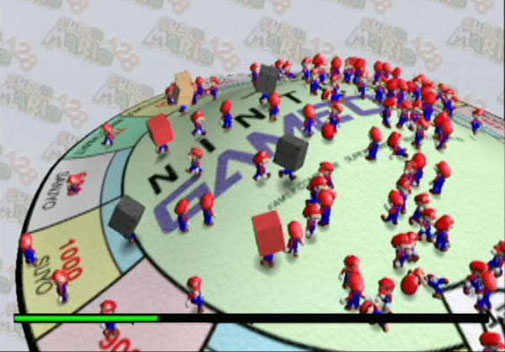 As I mentioned earlier, the N64 never saw a sequel to Super Mario 64. Shigeru Miyamoto mentioned a possible ‘Mario 128’ as early as 1997, but it wasn’t until 2000 when the Gamecube was shown off at Nintendo’s SpaceWorld show that we saw something with this title, and it didn’t look at all like Super Mario 64. It was merely a tech demo showing 128 mini Marios on a sphere, to show off the power of the new console.
As I mentioned earlier, the N64 never saw a sequel to Super Mario 64. Shigeru Miyamoto mentioned a possible ‘Mario 128’ as early as 1997, but it wasn’t until 2000 when the Gamecube was shown off at Nintendo’s SpaceWorld show that we saw something with this title, and it didn’t look at all like Super Mario 64. It was merely a tech demo showing 128 mini Marios on a sphere, to show off the power of the new console.
The following year, a sequel came. Gamers rejoiced! Super Mario Sunshine was announced, and was released in 2002. But what’s that on Mario’s back? That, my dear friends, is FLUDD, a device that allows Mario to spray water, burst across water and even launch into the air. Mario doesn’t control quite like Mario anymore! This wasn’t quite what they were expecting…
Super Mario Sunshine is a little bit more story and cutscene heavy than its predecessor – Mario and Peach are going on holiday to Isle Delfino, but arrive to find their destination covered in graffiti. Mario is blamed for the mess and ordered to clean it up, while the real culprit, Shadow Mario, takes off with Peach.
Although it was released to critical acclaim and by most peoples accounts it’s a great game, it wasn’t what people expected. Even its fiercest critics would applaud it though for its beautiful graphics – has there been better water since on a Nintendo console? Another often cited highlight are the sections where FLUDD was taken away – these pure platforming sections definitely provided the inspiration for the precision needed in the trickier levels of the Mario Galaxy series, 3D Land and 3D World.
For years after, Nintendo continued to promise the so-called Mario 128, but it never surfaced. The tech demo shown in 2000 clearly went on to inspire Pikmin and the spheroid physics were later used in the wonderful Mario Galaxy for the Wii.
Since Super Mario Sunshine, Mario’s 3D adventures have changed in that they are more focussed on just the platforming – gone are the wide open spaces to explore. While I have absolutely loved every single one of them, like many who grew up in the same era as me, I’d love to see the perfect blend of exploration and platforming Nintendo achieved in Super Mario 64 again.
Final Thoughts
While some who have been with Mario since the beginning may feel that he’s lost his way to be shoehorned into such a vast array of games, for me, Mario has always been a jack-of-all-trades. As you should be able to tell from what you’ve just read, he’s been a conduit for me to explore a wide range of genres and you know you can always expect something of relatively high quality when it comes to Nintendo and Mario. He provides a level of familiarity and fun when you’re trying something new, and is accessible to anyone, young or old.
Happy 30th Birthday Mario! Here’s to (at least) 30 more years of fun and adventures for us all to enjoy.
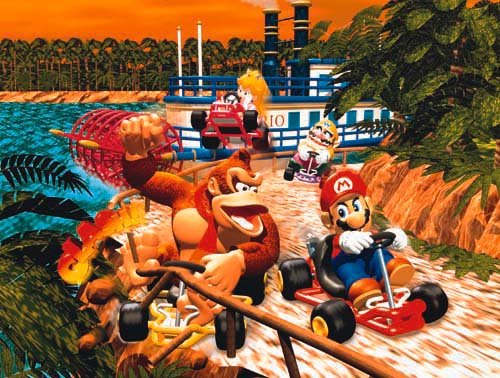
What were your favourite Mario games from the N64 era? Let us know in the My Mario Memories thread in our forum or using the comments section below.


